For Conservation, Climate and Grapes
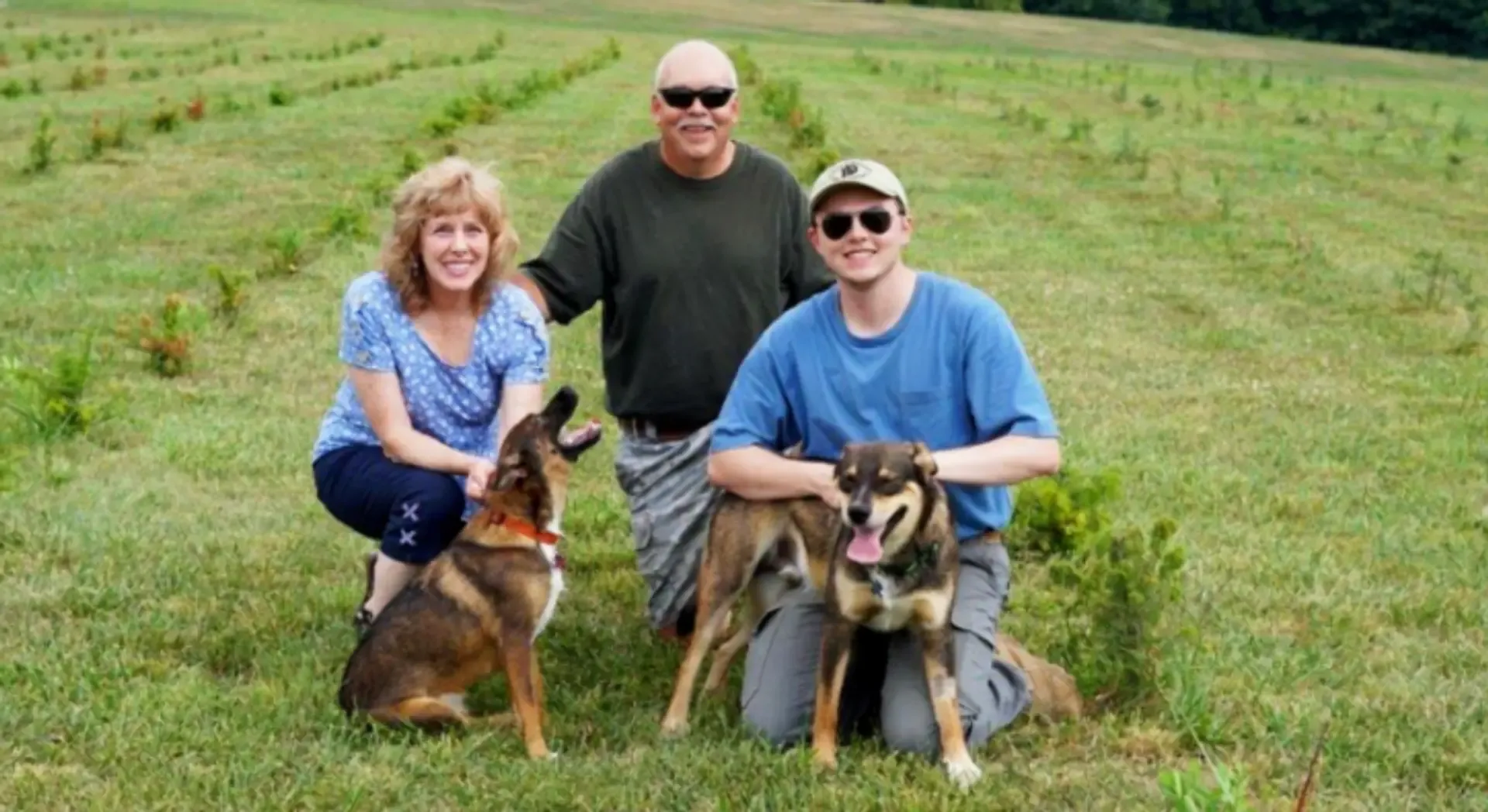
The Trezise family. Photo by Bryce Trezise, courtesy of U.S. Nature4Climate.
Across a stretch of open field in the rolling hills of Allegany County, you can spot newly planted grapevines in perfectly straight rows. Beyond, the backdrop is filled with middle-age oaks, hickories and maples all reaching for the sky.
To the Trezise family, Kevin, Rene, and their son Bryce, this is the site of their future farm and vineyard. The 187-acre forested plot in Cumberland, Maryland is just two and half hours from Washington, D.C.
But starting an agri-business takes more than aspirations. It takes upfront investment and technical assistance – two perks the family found in the Family Forest Carbon Program.
The Trezise family purchased their Maryland property in 2020. Kevin had grown concord grapes for almost a decade in a 2-acre backyard before his retirement, making jellies and grape juice, but he hoped to expand into wine grapes and Christmas trees on the new land. The family always wanted a plot of land to work, but figured they would have to look westward from their Maryland home to find anything; when a parcel from the dairy farm behind their house came onto the market, they jumped at the opportunity to start their agri-business so close to home.
Little did they know it would turn into a full-time family affair. Together with Rene and Bryce, Kevin prepared the property to grow their agri-business.
The family named the farm Daisy’s Domain in memory of their beloved family dog, who also shared their love for the outdoors. Even before they had acquired the property, Bryce remembers Daisy watching over the land behind their home from a small hill in their backyard.
Over the first two years, the Trezise family carved out trails and cut fire breaks in the 130 acres of existing forest. They planted nearly 1,000 Christmas trees in a 30-acre field not too far from the road.
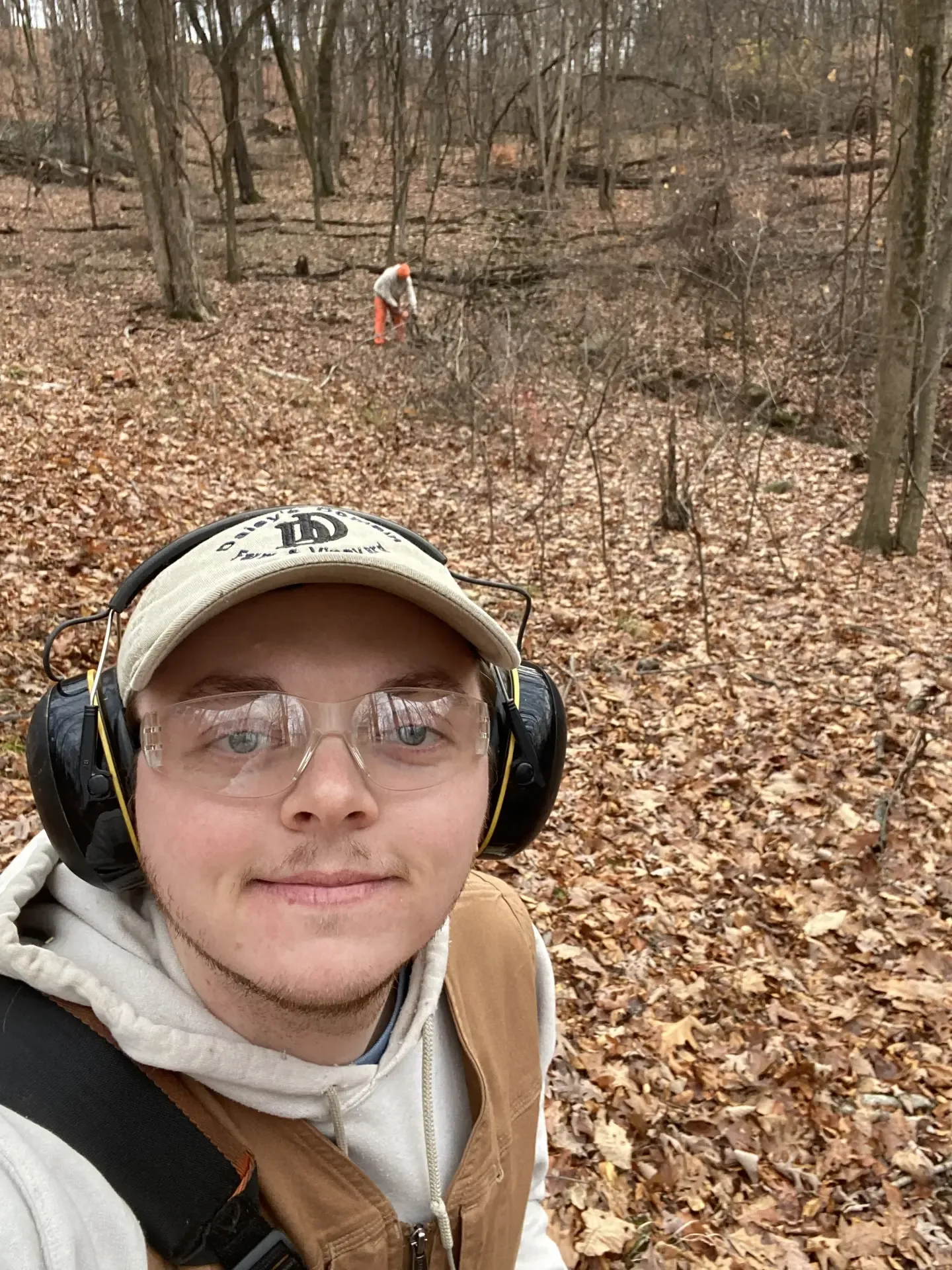
Bryce Trezise helped carve out trails and cut fire breaks in the 130 acres of existing forest.
Christmas trees grow in an eight-year cycle. The family has segmented the field and plants a certain number of trees in each segment each year so there will always be Christmas trees to sell once the first set reaches maturity.
The family also connected with a forester from the Maryland Department of Natural Resources. They developed an overarching forest management plan for the property. During this time, they also became certified through the American Tree Farm System. While growing a healthy business, the family wants to continue to grow healthy woodlands. “Our stewardship doesn’t stop at the property line. If we can do good by the planet, then the decision is a no-brainer,” Bryce said about enrolling in conservation programs.
By working with a forester, the family learned even more about their property. They found that their forest hosts a large group of maple trees. In the future, they plan to sugar the maples as another source of income.
The Trezise family also learned that their property is home to the largest wetland in Allegany County. Their forester helped set up a plan to steward this unique ecosystem, highlighting the specific ways to work a woodland with many vernal pools and unique species. The plan also addressed those species that aren’t supposed to be there—the wetland had many non-native and native invasives which the family hoped to remove.
Then came the grapes. In 2021, the family planted their first batch of roughly 500 grapevines. The operation has since grown to 1,510 plants of 7 different varieties. Each variety offers a unique kind of wine and flavor. The family decided to grow multiple varieties to determine which could grow best in the Maryland climate, and which would produce the most high-quality wine grapes. Currently, they estimate their vineyard can produce 6,000 bottles of wine per year.
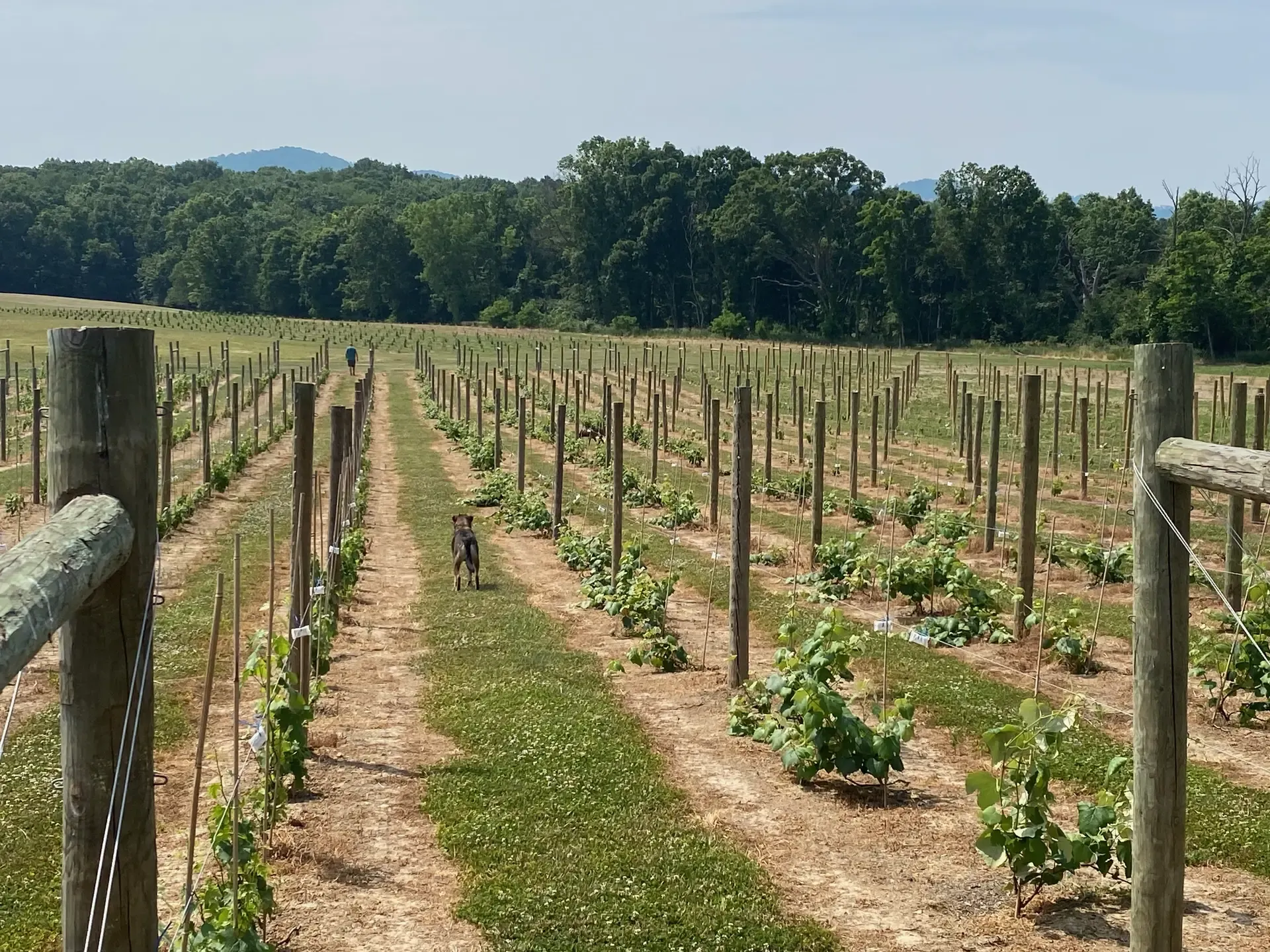
The Trezise family has always grown grapes; but when they purchased the land for their farm, Daisy's Domain, the family planted their first batch of roughly 500 grapevines.
The downside to growing an agri-business inventory is that the family will have to wait several years to appreciate the financial fruits of their labor. The Christmas trees will take the better part of a decade before they can be sold, and the grapes require several years to mature before they are ready for winemaking. Until then, the family is learning as much as possible Bryce has enrolled in an associate’s degree program in winemaking, his father pursuing an associate’s degree in viticulture and his mother learning more about the christmas tree business.
Kevin, Rene, and Bryce have also learned from the community of conservation-minded landowners also working with AFF. They’re part of the Family Forest, an online forum hosted for forest owners to share experiences, ask questions, and learn from other landowners’ management techniques. “We have a community that we didn’t have before,” said the family. They’ve been involved in conversations about pond management, invasive species control, and general land stewardship that has helped inform their decisions on the Maryland property. Without a source of income from the land just yet, the Trezise family plans to maintain what they’ve already planted while tackling their long list of other projects.
To make up for some of the cost, the family sat down again with their forester to discuss potential revenue streams. One option was to harvest their forest, but the trees were well under maturity and harvesting would decrease the overall health of the land – which was not an option for the Trezise family. Instead, their forester suggested a new program offered in Maryland: the Family Forest Carbon Program.
Their forester explained the Family Forest Carbon Program is uniquely designed for owners of private forested properties. The program is a long-term resource, providing annual payments to family forest owners to implement scientifically proven forest practices that increase the amount of carbon sequestered and stored in trees. In addition, the program provides expert assistance from a professional forester and creates a forest management plan customized for each enrolled landowner’s property.
FFCP was just the boost the Trezise family needed to keep their agri-business’s momentum going – with a steady income stream and readily available resources to help them care for the land. They decided to enroll. Their forester made the process easy, taking additional measurements of their trees and helping them through the contract. They received their first upfront payment, and immediately put it towards drilling a well that will help with water for the grapes and Christmas trees. “The income helps us keep moving forward on the property,” explained Bryce.
Bryce will take over the family business someday and is excited about their involvement in the program. “What we want to create is not just about the winery – it’s about being good stewards of the land and creating a destination where people can come and see what conservation looks like. I have already learned an incredible amount about the potential our little piece of nature can make on helping climate change and I hope others are able to find this program as well.” He’s actively working on a plan to scale the winery business out to 2035, growing the vineyard operation year-by-year.
The Family Forest Carbon Program is open for enrollment in Maine, Maryland, Massachusetts, Michigan, Minnesota, New Hampshire, New York, Ohio, Pennsylvania, Vermont, West Virginia, and Wisconsin. It is open to landowners with as little as 30 acres. It has enrolled more than 500 small forest owners, who collectively own more than 72,000 acres. For more information on enrollment, visit familyforestcarbon.org.
Related Articles

November 17, 2022
Maryland Landowner Sees the Potential in His Land
Bryce Trezise, a Maryland landowner enrolled in the American Forest Foundation's Family Forest Carbon Program, recently shared his story with our partners at U.S. Nature4Climate.
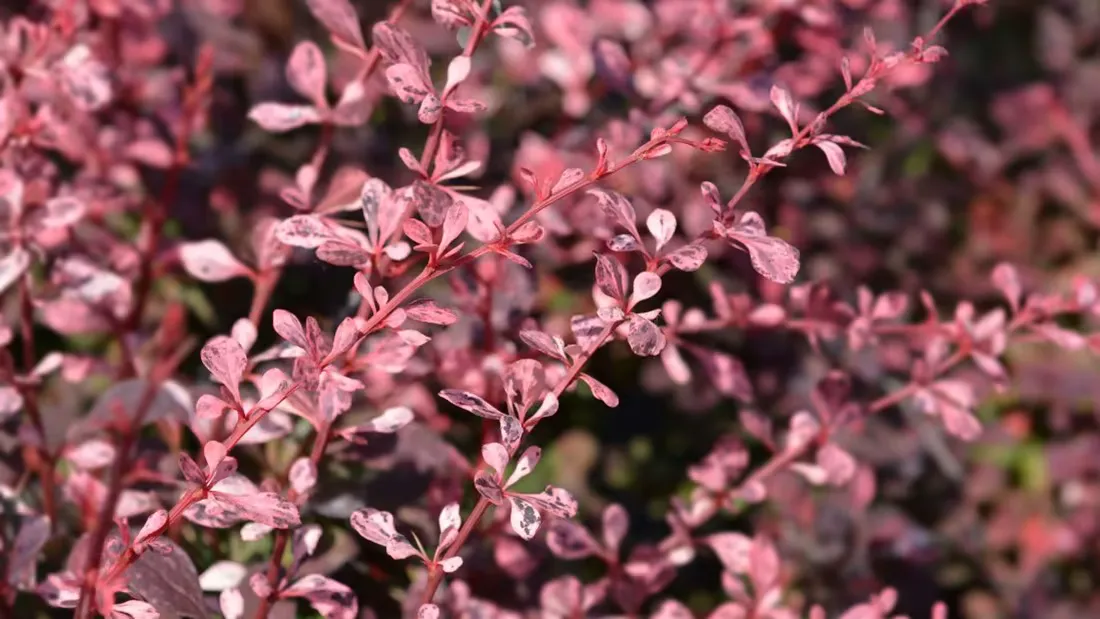
September 1, 2023
Managing Invasive Plant Species in the Central Appalachian Region
Over 78% of West Virginia, 60% of Pennsylvania and 39% of Maryland is woodland. Maintaining a healthy forest requires keeping invasive plant species under control.
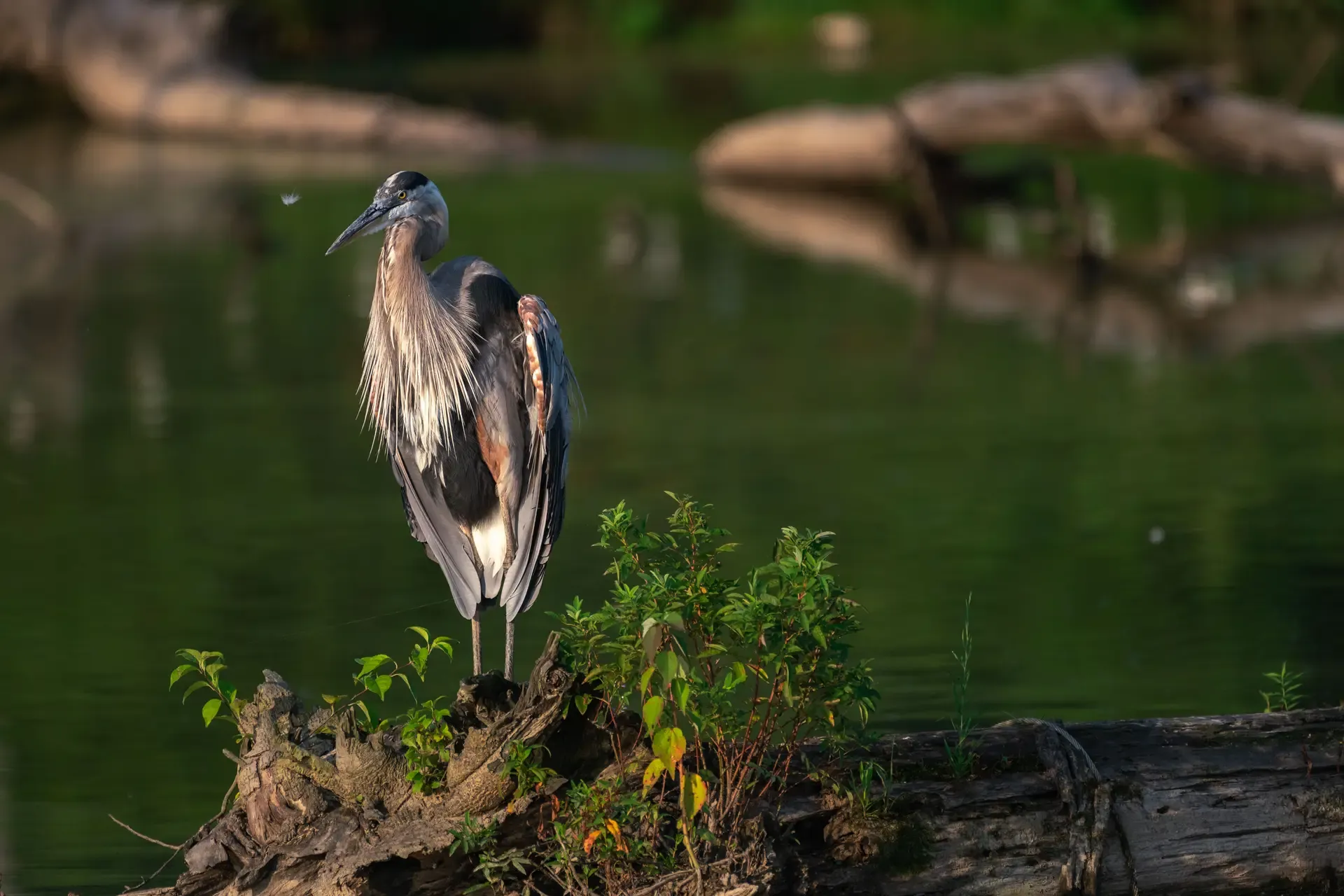
February 13, 2024
Who’s Flying in Your Woodlands? Guide to Migratory Birds
The end of winter gives rise to spring migrations as wildlife returns to your woodlands. We're highlighting the common migratory bird species often found in the U.S.